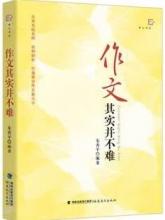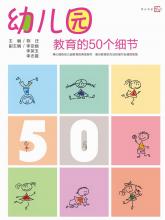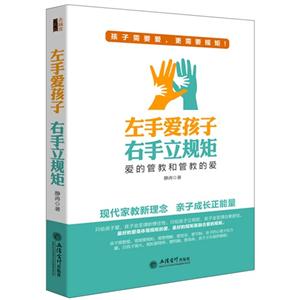经贸英语教程

|
经贸英语教程作者:于秋主编 开 本:16 书号ISBN:9787562448594 定价:28.0 出版时间:2009-08-01 出版社:重庆大学出版社 |
经贸英语教程 本书特色
《经贸英语教程》:知名专家领衔,编写队伍精英荟萃。具有系统性,注重教材之间的支撑和衔接。具有完整性,覆盖大纲规定的所有课程类型。具有新颖性,理念、素材和体例均大大突破传统教材。典有开放性,可根据不同情况灵活选择。突出对学生基本技能和实际应用能力的培养。培养学生人文素质和跨文化意识,强调全面发展。注重与《普通高中英语课程标准》的衔接。适应大学英语教学基本要求,大学英语学生可选修。
经贸英语教程 内容简介
全书共11章,每一章都由四个部分组成,**、二部分是两篇课文,分别介绍基础理论;第三部分补充阅读,介绍更多更专业的相关内容;*后的案例分析部分是为锻炼学生实践能力而设计的。
经贸英语教程 目录
Chapter 1 What Is EconomicsPassage 1 What Is EconomicsPassage 2 MacroeconomicsSupplementary Reading Economic Concepts in Daily LifeCase Study A World without Jobs?Chapter 2 Economic GrowthPassage 1 Economic GrowthPassage 2 The Measurements of Economic GrowthSupplementary Reading Economic ForcesCase Study Japan’s Economic Performance between 1960—1996Chapter 3 The Economic Roles of GovernmentPassage 1 The Economic Roles of GovernmentPassage 2 Government PoliciesSupplementary Reading A Brief History of Economic ThoughtCase Study China’s Macroeconomic Policy in Recent YearsChapter 4 MoneyPassage 1 What Is Money?Passage 2 Money and Its SystemSupplementary Reading Finance: A Company’s LifebloodCase Study E-cach and EqualityChapter 5 InvestmentPassage 1 What Determines InvestmentPassage 2 Debts or SecuritiesSupplementary Reading Stock Exchange in AmericaCase Study Company Profile and Investment HighlightsChapter 6 AccountingPassage 1 Introduction to AccountingPassage 2 The Balance SheetSupplementary Reading Generally Accepted Accouting Principles and Organizations Concerned with GAAPCase Study Effects of Business Transactions upon the Balance SheetChapter 7 International TradePassage 1 International TradePassage 2 Basic Theories of International TradeSupplementary Reading Ways of Doing Business InternationallyCase Study The Foreign Trade of the UKChapter 8 World Trade OrganizationsPassage 1 Basics of GATTPassage 2 The Basics of the World Trade OrganizationSupplementary Reading The Uruguay RoundCase Study China’s Bid to Join the World Trade OrganizationChapter 9 Trade BarriersPassage 1 International Trade SystemPassage 2 Barriers to World TradeSupplementary Reading Multinational CorporationsCase Study The Theory Behind the AntidumpingChapter 10 Foreign ExchangePassage 1 Foreign Exchange TradingPassage 2 Foreign-rate SystemsSupplementary Reading The Foreign Exchange MarketCase Study The Gold Standard and the Great DepressionChapter 11 International PaymentPassage 1 The Balance of PaymentsPassage 2 The System of Bretton WoodsSupplementary Reading Balance of Payments AdjustmentsCase Study Mexico’s 1994 Balance of Payments Crisis经贸英语教程 节选
《经贸英语教程》是当前培养复合型人才的重要教材之一,内容丰富,知识体系清晰、系统、完整,包括宏、微观经济学原理和国际贸易理论和实践。全书共分为11章,**章都由四个部分组成,**、二部分是两篇课文,分别介绍基础理论;第三部分为补充阅读,介绍更多更专业的相关内容;*后的案例分析部分是为锻炼学生实践能力而设计的。话题涉及经济增长、政府职能、货币、贸易理论、贸易环境与壁垒、国际收支、外汇、会计学、营销学等经济生活的方方面面。
经贸英语教程 相关资料
Most simply put, economics is the study of how a society people) chooses to usescarce resources to produce goods and services and to distribute them to people forconsumption. Any economy' s resources consist of three broad areas: natural, capital,and labor. Natural resources, such as crude oil, natural gas, minerals, timber, andwater, are provided by nature in limited amounts; they must be processed to become aproduct or to be used to produce other goods or services. For example, trees must beprocessed into lumber before they can be used to build homes. Meanwhile, capitalresources refer to the goods produced for the purpose of making other types of goods andservices. Some capital resources, called current assets, have a short life and aregenerally used up in the production process. These resources include fuel, raw materials,paper, and money. Opposite to current assets, long-lived capital resources, which can beused repeatedly in the production process, are called fixed capital. Examples includefactory buildings, compact-disk machines, personal computers, and railroad cars.In addition to natural resources and capital resources, labor resources represent thehuman talent of a nation. To have value in the labor force, individuals must be trained toperform either skilled or semiskilled work. For example, the job of a physicist requiresextensive training, whereas only minimal training is needed to operate a service station' sgas pumps. This collection of human talent is the most valuable national resource.Without human resources, productive use of either natural or capital resources isimpossible.Resources are used to produce goods and services which will meet people' s needs and wants. Needs are goods and services that people must have or possess simply for survival or exist ence. For example, food, clothing, shelter, and medical care are needs; Wants, on the other hand, are things they would like or are willing to have but do not absolutely need for survi
外语 大学英语 大学专业英语教材
在线阅读
- 最新内容
- 相关内容
- 网友推荐
- 图文推荐
| [高考] 2022 西安电子科技大学《软件工程》大作业答案 (2022-04-25) |
| [家长教育] 孩子为什么会和父母感情疏离? (2019-07-14) |
| [教师分享] 给远方姐姐的一封信 (2018-11-07) |
| [教师分享] 伸缩门 (2018-11-07) |
| [教师分享] 回家乡 (2018-11-07) |
| [教师分享] 是风味也是人间 (2018-11-07) |
| [教师分享] 一句格言的启示 (2018-11-07) |
| [教师分享] 无规矩不成方圆 (2018-11-07) |
| [教师分享] 第十届全国教育名家论坛有感(二) (2018-11-07) |
| [教师分享] 贪玩的小狗 (2018-11-07) |






